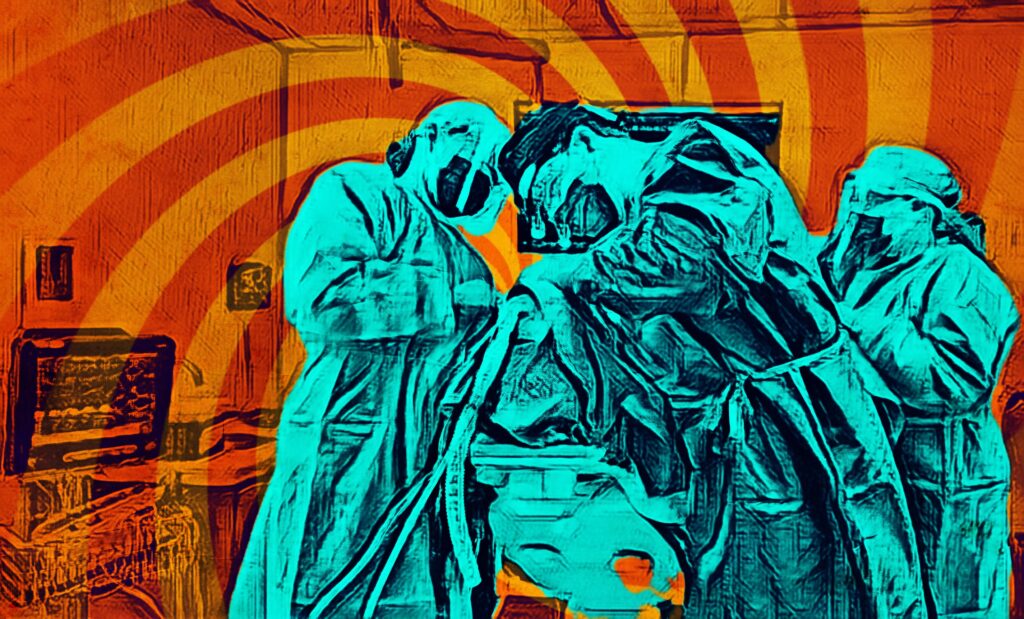I always attempt, with a fervent passion, to avoid removing a full arch prosthetic during the first four months of osseointegration.
During this time, the implants have not yet integrated. Furthermore, the recently placed implants go through a period known as the stability dip, which makes them even more susceptible to negative effects from operator manipulation.
Removing or changing the prosthetic is less than ideal (to say the least) during this time.
That being said, there are a few select scenarios where I feel the benefits outweigh the risks. On these rare occasions, I will temporarily remove the prosthetic during the 4 month integration period for improved surgical access.
5 Scenarios in which I will Remove an AOX Prosthetic Prior to Implant Integration
1. Bleeding
I have operated on a handful of anticoagulated patients who achieved a routine post-operative level of hemostasis prior to leaving the office. However, they have then returned anywhere from 1-5 days later with persistent bleeding underneath the prosthetic that they are unable to control.
I have noticed this most commonly with patients on Coumadin and I take great caution with this medication.
When anticoagulated patients have post-op bleeding underneath the prosthetic, this can be difficult to manage as there isn’t really a feasible way for either them or you to apply direct pressure to the bleed.
Therefore, in order to gain direct access to the bleed, I remove the prosthetic. After the prosthetic is removed, hemostasis is achieved and verified in the office. Finally, I leave the prosthetic off for 48-72 hours to confirm that the anticoagulated patient remains hemostatic and that they also have direct access to apply pressure should they need to at home. The prosthetic is then delivered again after confirmation of hemostasis for 48-72 hours.
2. Acute Infection
Patients that present with an acute infection and signs and symptoms of swelling, purulence, and pain require urgent surgical intervention. A full assessment of the patient and cause of the infection is indicated.
There are times where the infection may not be related to an implant, and as such the infection can be successfully managed with the prosthetic in place.
However, often an implant site is involved. If this is the case, I remove the prosthetic and address both the infection and the associated implant.
3. Failed & Symptomatic Implant
A failed implant may not always present with signs or symptoms of acute infection. This is because it may not yet have actually progressed to the point of infection.
However, similar to the scenario above, a failed and symptomatic implant requires urgent treatment. It is not practical to have a patient in pain wait “2 more months” for integration of the remaining implants. This patient also carries a risk of a worsening oral/facial infection if no action is taken.
In these cases, the prosthetic is removed and appropriate surgical intervention is taken.
I make note that the patient is “symptomatic”. This is not a requirement for intervention regarding a failed implant – and I often intervene on a failed, or presumed failed implant, even if it is asymptomatic. However, in the absence of symptoms during the 4 month integaration period, it is not uncommon for both the patient and provider to not know that an implant has not integrated. As such, an asymptomatic failure is most often noted at the 4 month follow up. Therefore clinical signs and symptoms drive the decision for early intervention during the integration period.
4. Oral-Antral Communication
An oral-antral communication in the setting of AOX surgery can range from a simple surgical fix to a very complex problem. There is no one size fits all in management of these complications as it is dependent on many factors such as:
- Location of OAC
- Size of OAC
- Noticed during or after 4 month integration period
- Symptomatic or asymptomatic
- Associated with an implant and/or graft
- Located at an extraction site not associated with an implant
- Health/status of sinus
- Medical history of patient
All of these factors weigh in on when/how to repair an OAC. While I am not going to go into detail here on my OAC assessment and treatment strategies (this is a whole article in and of itself) – I will say that depending on the presentation and symptoms, this is a time that I would consider removing the prosthetic prior to the 4 month mark for treatment.
5. Non-Healing, Painful Dehiscence
Fortunately, soft tissue dehiscences are not, and should not be common in AOX surgery. Nonetheless, with enough arches you will deal with this complication from time to time. A detailed management strategy is discussed here.
It is rare that management of a dehiscence would require removal of the prosthetic during the 4 month integration period. However, in the setting of a large, painful dehiscence that is no longer edematous and could be tacked closed or benefit from PRF – this is one scenario that I would give thought to removal of the prosthetic for management. Again, this decision would likely be driven by symptoms and patient comfort.
Please note that I am not advocating to re-close all dehiscences. Nor is this what I normally do. Often, closure of a dehiscence is not indicated – and it can sometimes actually be contraindicated depending on the timing of the closure attempt, the surrounding tissue edema, and the passivity of the tissue.
It should be noted that the decision to remove the prosthetic is usually a multifactorial decision that includes the items listed above, the implant torques, the difficulty of the case, the availability or lack thereof of additional bone/implant sites, as well as the patient’s medical history.
I feel that this is a decision that should not be taken lightly. However, there are times where it simply needs to be done and is truly in the best interest of the patient.
My hope is that implant integration is never your fear,
And that the end of your 4 month healing period quickly draws near.
Wishing you a prosthetic that remains torqued and intact,
But more importantly, AOX clinical decision making based on experience and fact.
Matthew Krieger DMD

